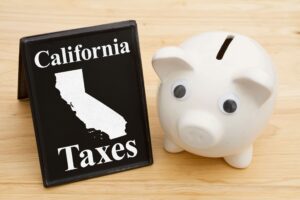Depreciation vs Amortization: Key Differences and Application in Accounting

Conversely, a higher interest rate will increase the total cost of the loan. This method ties amortization to the usage or production level of the intangible asset, making it more suitable for assets whose benefit is directly linked to production output. After capitalizing natural resource extraction costs, you can easily allocate the expenses across different periods based on the extracted resource. Until that time, when the expense recognition takes place, these costs are usually held on the balance sheet.
- It is the amount of expense charged against income for the wear and tear or decline in value of tangible assets over their useful lives like buildings, equipment, vehicles, and machinery.
- The amortization method uses intangible assets with an identifiable legal or useful life.
- HighRadius offers a cloud-based Record to Report Software that helps accounting professionals streamline and automate the financial close process for businesses.
- By understanding these methods, you can ensure proper depreciation accounting and optimize your tax planning strategies.
- As part of the year-end closing, the balance in the depreciation expense account, which increases throughout the client’s fiscal year, is zeroed out.
- Small business owners should grasp these differences not only for precise financial reporting but also for optimizing tax benefits and asset management.
Revenue Reconciliation

The Internal Revenue Service (IRS) rule requires that you use the cost method when dealing amortization vs depreciation with timber. You are also supposed to use a method that produces the highest deduction when dealing with mineral property. In other contexts, Amortization also refers to loan repayment over time in regular installments of principal and interest satisfactorily, to repay the loan in its entirety as it matures. These two concepts are similar and serve related purposes, but they apply to different aspects of your business. Depreciation and amortization are complicated and there are many qualifications and limitations on being able to take these deductions.

Payments
Since goodwill is an intangible asset, its value has to be amortized. But, in a disruptive decision of 2001, the Financial Accounting Standards Board (FASB) disallowed the amortization of goodwill as an intangible asset. The sum-of-the-years digits method is an example of depreciation in which a tangible asset such as a vehicle undergoes an accelerated method of depreciation. A company recognizes a heavier portion of depreciation expense during the earlier years of an asset’s life under this method.
How do you calculate amortization?
However, public companies can recognize goodwill impairment as a downward adjustment to the recorded value on the balance sheet. Contrary to a common misconception, land is not permitted to be depreciated per U.S. GAAP accounting standards because of the implicit assumption that land has an infinite life. Instead, the actual cash outlay occurred in the initial period when the company decided to purchase the long-term fixed asset (PP&E) or capital expenditure (Capex). Tangible assets are physical assets like inventory, manufacturing equipment, and business vehicles.
How to Calculate Depreciation & Amortization?
The cost of the long-term, tangible assets can be deducted as business expenditures (expense), which in turn reduces the taxable income. By systematically spreading the cost of these assets over the periods they benefit, depreciation ensures that the expense of using QuickBooks Accountant the asset is matched with the revenue it helps generate. This practice adheres to the matching principle in accounting, which states that expenses should be recorded in the same period as the revenues they contribute to. Governed by accounting standards such as GAAP or IFRS, specifying how intangible assets should be amortized. That said, you also purchased a piece of equipment for $50,000 on January 2, 2022, and the expectation is that this new addition is going to last for the next 10 years.
Straight-Line Method: A Simple and Effective Approach
Thomson Reuters Accounting Periods and Methods Fixed Assets CS has the tools to help firms meet all of a client’s asset management needs. Given that amortization and depreciation are both deductible from taxes as business expenses, they can prove very beneficial for business clients. They can be especially beneficial for smaller businesses that are operating with limited budgets.
- Merriam-Webster provides some accelerate synonyms that include “quickened” and “hastened.” A larger portion of the asset’s value is expensed in the early years of the asset’s life.
- Each method reflects different assumptions about the asset’s usage and how it provides value to the business over time.
- For instance, the recorded value of a company’s inventory, a current asset, can be written down partially on the books or completely wiped out based on the estimated fair value.
- Understanding the difference between amortization and depreciation helps you manage your assets well.
- Where it differs is that it refers to the gradual exhaustion of natural resource reserves, as opposed to the wearing out of depreciable assets or the aging life of intangibles.
- Depreciation and amortization are essential accounting concepts that are pivotal in understanding a business’s financial health and managing its assets.
Amortized vs. Depreciation
- Another difference is that the IRS indicates most intangible assets have a useful life of 15 years.
- Intangible assets include things like intellectual property and goodwill.
- This dual approach can help ensure compliance and financial efficiency, but requires careful management to align both tax reporting and financial accounting.
- Depreciation and amortization typically begin when the asset is acquired and end when it is fully depreciated or used up.
- Since amortization of assets is recorded as an expense, it affects the profitability shown in the income statement.
- Both allow businesses to deduct the cost of an asset over its useful life, which can reduce taxable income and, as a result, decrease the amount of tax owed.
Your choice should align with how the asset is used in your business to provide the most accurate financial picture. Understanding depreciation is a fundamental accounting skill that can make your financial analysis robust and insightful. It’s not just about bookkeeping; it’s about portraying a realistic picture of your business’s financial health. Since no real cash movement occurred in the given period, the company did not incur an actual cash outflow, which the cash flow statement reconciles with the reported cash balance. The depreciation expense formula calculates the depreciable basis by subtracting the residual value from the purchase cost, which is then divided by the useful life assumption.
- The main difference is that amortization is used for intangible assets, while depreciation is used for tangible assets.
- But, X enjoys a reputation in the niche local market so the purchase consideration was fixed at 500 million.
- But, in 2023, your company gets featured on a small business podcast.
- This accounting method ensures that the amortization expense would realistically reflect the usage of the intangible asset.
Proper amortization practices are required to comply with accounting standards such as GAAP and IFRS. Compliance ensures that a business’s financial statements are fair and consistent, which is vital for investors, regulators, and other stakeholders. The length of the loan (loan term) and the interest rate are crucial factors that affect the amortization schedule. Longer-term loans will generally have lower monthly payments, but result in higher total interest paid over the life of the loan.
![]()
Tax Implications of Depreciation and Amortization
Business startup costs and organizational costs are a special kind of business asset that must be amortized over 15 years. A limited amount of these costs may be deducted in the year the business first begins. 🧾 It shows up on your income statement as an expense, even though you didn’t spend new money each year. Governed by accounting standards that dictate which costs can be capitalized and how they should be treated subsequently. There are four accepted methods of depreciation, and we’ve taken an in-depth look at straight-line and units of production depreciation already. Though the other two methods are used less frequently, they are still important to understand.
Percentage Depletion Method
Instead, they represent the systematic allocation of the cost of an asset over its useful life. These expenses reduce reported income for tax and accounting purposes while leaving cash flow unaffected. Beyond their role in accurate financial reporting and tax savings, depreciation and amortization offer several other advantages for businesses.